The Stylophone is the resurrected hit of the 70s or David Bowie's “sensory” nightmare
About a year ago, on the air of the Svoe Radio station, I happened to hear one amazing group with which this post actually began. This collective became the ancestors of a heavy psychedelic twist, Petrozavodsk quintet “Gromyka”. I was very interested in the rather unusual sounds of the solo instrument that the band used. At first, I thought the guys were using some kind of Moog or some Thereminwox processed.
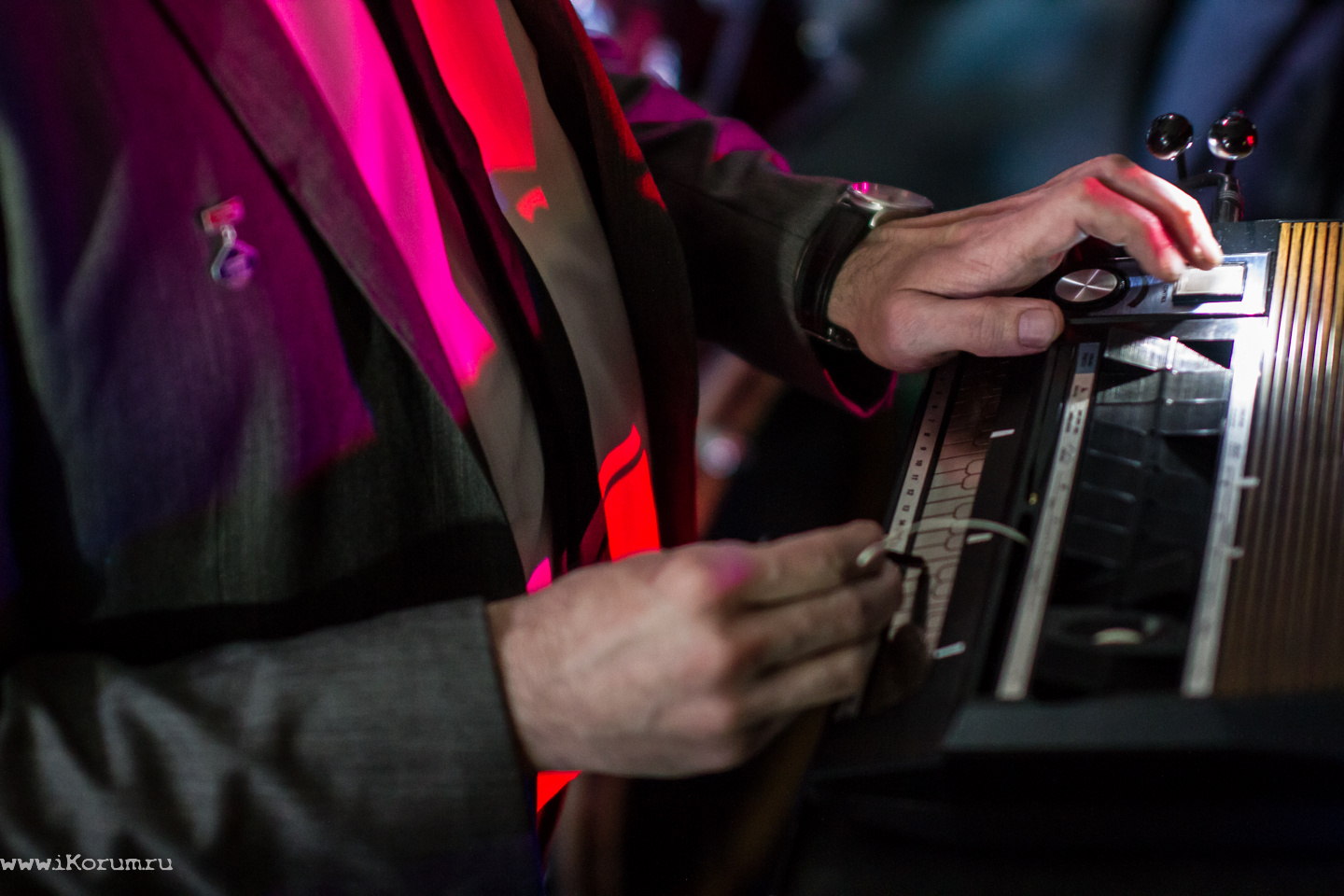
Features of the performance indicated that this is not a keyboard synthesizer and not a non-contact "violin" of Theremin. Watching the video showed that the band’s musician used a strange thing, the size of an old portable radio, with a metal panel instead of a keyboard, which is driven by two contact rods. The source of the "magical", lingering, expressive and at the same time quite sharp sounds turned out to be a stylophone (if exactly the Styllophone 350S of the 1970 model). I decided to figure out what this thing is, how it works, where and who used it, and what modern tools of this type are used now.
The Stylophone was invented at the dawn of the transistor era in 1967, by British enthusiast Brian Jarvis. Legend has it that in 1967, Jarvis repaired his niece's children's electric piano and randomly created this strange and at the same time very interesting instrument. The basic principle of operation of analogue stylophones has been unchanged throughout their history. Sounds are extracted from the instrument by touching the stylus to the “keys” (static metal platinum), the pitch of which changed depending on the resistance of the resistors connected to the oscillator. The first stylophones were produced in 3 versions: with high-frequency, mid-frequency and bass reproduction spectrum.
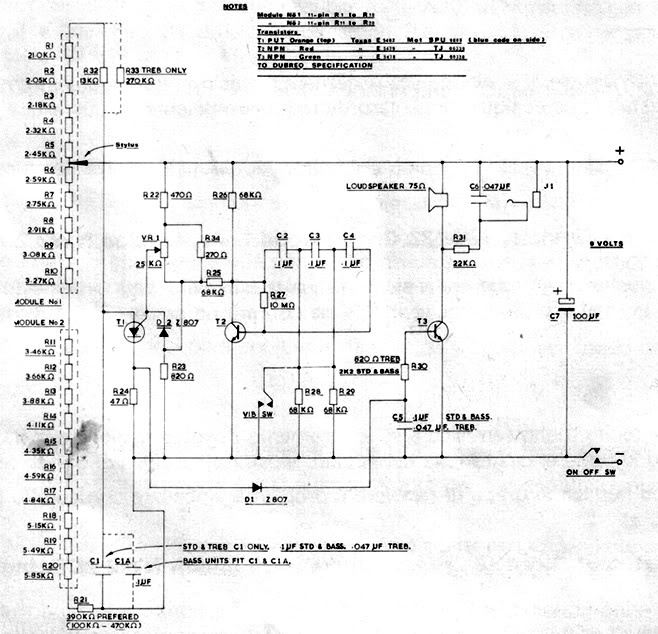
In the first stylophones, the functions of frequency vibrato and register changes were implemented. The standard keyboard included one and a half octaves (20 notes). In fact, the device was a toy, but almost unprecedented for the 67th year of parameters, and most importantly dimensions.

In 1968, Dubreq took up the production of the tool, which developed a stylish design of the stylophone and invested in a large-scale advertising company. For its time, the stylophone was really a discovery, the device easily fit in your pocket, and at the same time it was able to make sounds accessible at that time for heavy and completely non-mobile analog synthesizers. have worked on reducing the size.
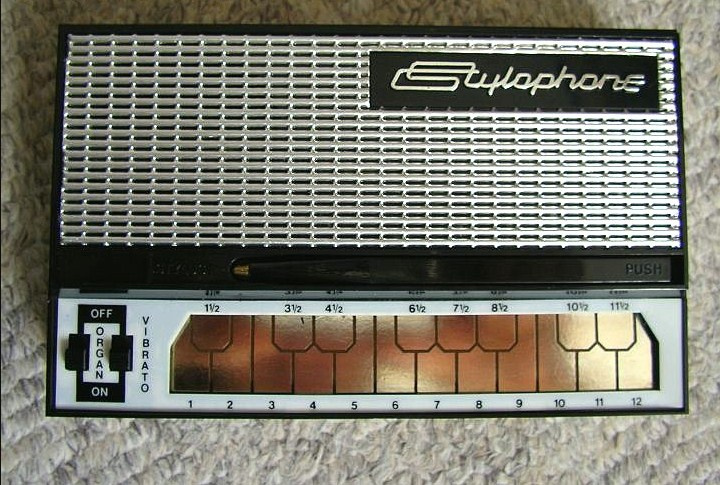
Many well-known performers were connected to the advertising company of the stylophone, including David Bowie, who then quite brightly began his musical career. In accordance with the contract that Bowie signed, he had to record several songs with a stylophone. According to the master himself, it was not easy for him, and he hated this tool.
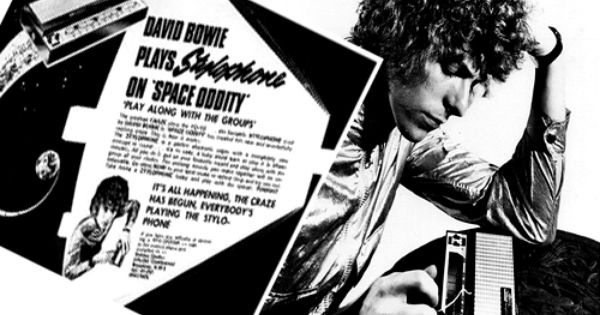
However, during the period of the advertising campaign he was modestly silent about this and fulfilled the terms of the contract. Using a stylophone, the song Space Oddity of 1969 was recorded, which became one of Bowie's most popular hits in the late 60s and early 70s.
The stylophone itself, both due to its unique properties - pocket size and characteristic sound, and in connection with impressive investments in marketing (by some estimates about 1 million pounds) became a real hit. Typical users of the stylophone are teenagers who are fond of music, children who used it as a toy, and also a relatively small number (compared to the first two categories) of musicians. About 3,000,000 classic stylophones were sold.
In 1970, a new model was developed - the Styllophone 350S, designed for professional musicians. The instrument was seriously expanded and implemented: photovoltaic vibrato and attack control, “wah” (wah-wah effect), an increase in the number of octaves to four (44 notes), provided a wide selection of effects and made the two-voice recorder. All this set of functions was supposed to make the new steelphone popular among professional musicians.
Demonstration of 350S capabilities (1977 is described in the description, although it is known that in 1975 the production of all models was suspended).
Should have, but didn’t. Professionals were conservative and perceived any stylophone as a toy, preferring often more primitive analog synthesizers to it. And for a toy (albeit a very sophisticated one) - 80 pounds (now it is about 700, taking into account inflation) - it was an extremely high cost.
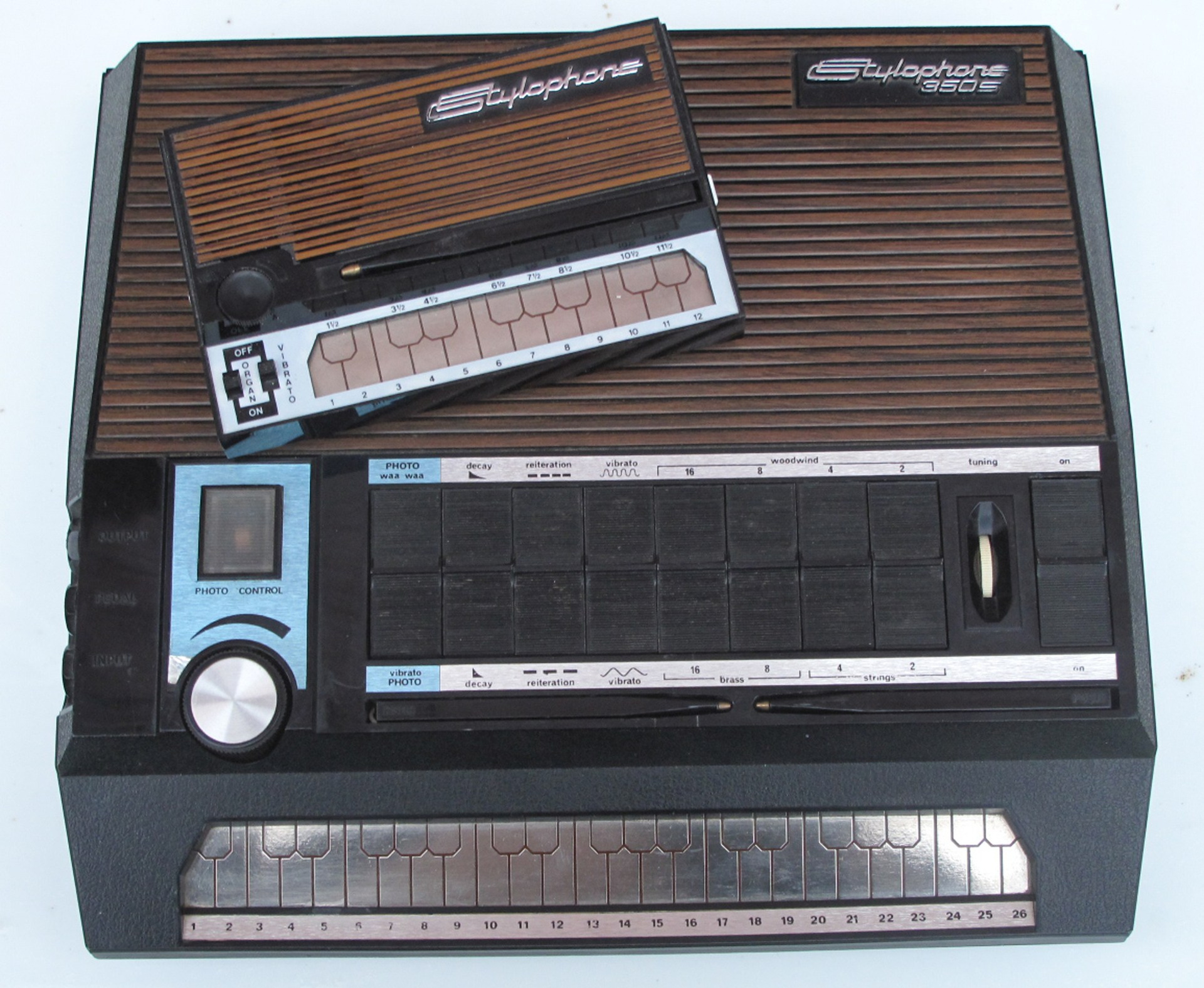
Today on ebay this tool can be found for prices ranging from $ 200 to $ 1,000. However, due to the small number of these devices, the Styllophone 350S may become a serious collectible value in the coming years. As I have already noted, the Russian band Gromyka is very successfully using the Styllophone 350S today, both in studio and in concert. In addition to the already named Bowie, periodically, such artists as Tony Visconti, Richard Baron, Kraftwerk, They Might Be Giants, Pulp played and recorded something on the stylophone.
In October 2007, due to the rapidly growing interest in vintage music trends, the toy company Re: creation, in collaboration with Dubreq Ltd (which rose from the ashes in 2003 under the leadership of Ben Jarvis, the son of one of the founders of Dubreq), started a restart project stilophone. The companies released a digital copy of the original stylophone, called S1. The design of the device has not undergone significant changes and looks almost the same as its predecessor 32 years before. The sound also remained virtually unchanged.
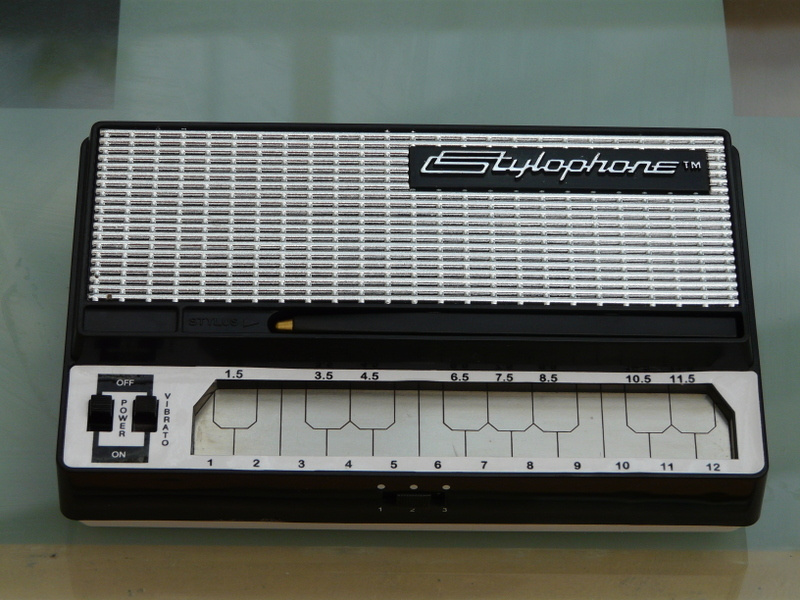
New technologies and the use of digital synthesis made it possible to further reduce the device, so the most portable of the existing tools of this type Stylophone mini appeared.
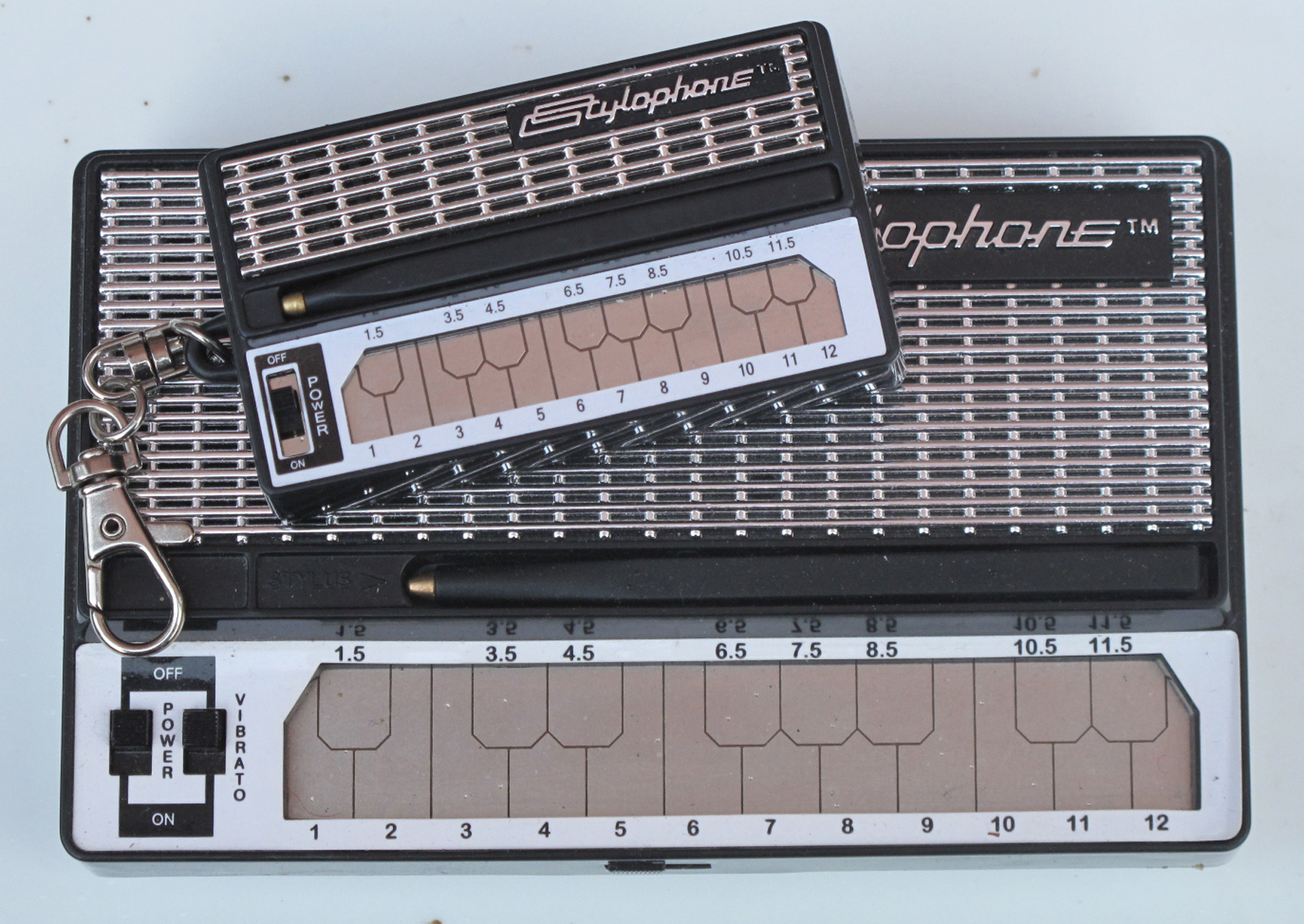
Stylophone mini vs. Stylophone S1
In addition, the company released a digital drum machine with loops, made in a design similar to the spirit of the classical instrument. The tool is called the Stylophone Beaetbox. YouTube is replete with rollers using these devices, such as this one:
In 2012, the Dubreq appears Stylophone S2, in which the developers returned to analog roots.
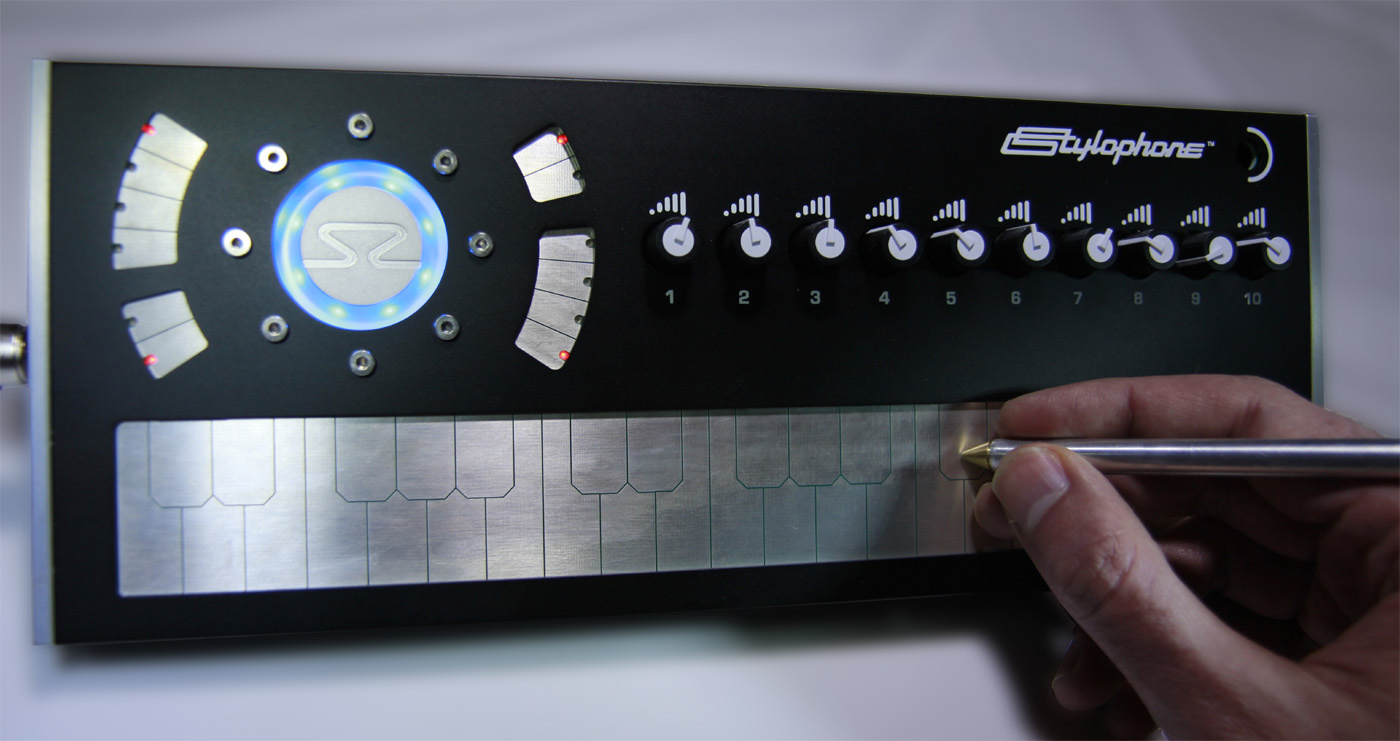
Unlike 60s models, the S2 has a resistive touch panel that responds not only to the stylus, but also to touch with your fingers. It has 3 octaves and is actually a portable analog synthesizer. Gizmo costs about 300 pounds.
In S2, the palette of reproduced sounds has been significantly expanded. This shaitan instrument sounds like this:
In this (2017) year, Dubreq promise to introduce the fresh Stylophone Gen X-1, which will also be an analog synthesizer with a fairly wide functionality. Unfortunately, the detailed characteristics of the miracle are kept in strict confidence. However, the cost of a two-octave instrument, according to developers, should not exceed 60 pounds.
The appearance of the prototype:
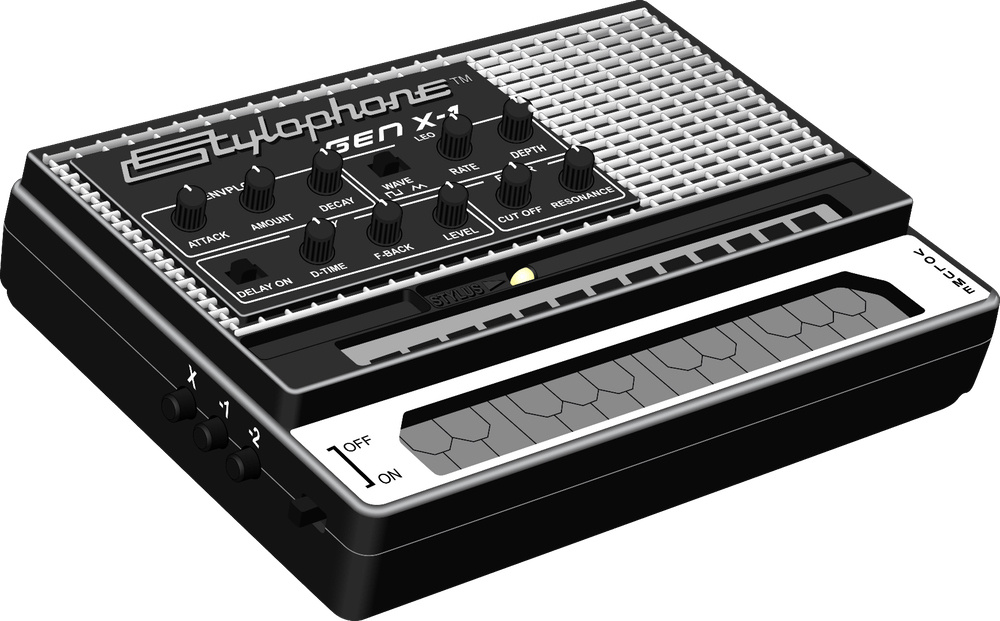
Amateur radio instruments of this type appeared almost immediately after the serial models entered the market, due to which a fairly large number of circuits were accumulated. A big plus of the stylophone for DIY-boxers and hams is the lack of the need to create complex key mechanics. It is enough to etch the board correctly and the thing in the hat - the "keys" will work.

One of the most interesting schemes was published by Radio Amateur magazine in issue 2 of February 2014. Where the two-tone stylophone was presented, working according to the following principle:
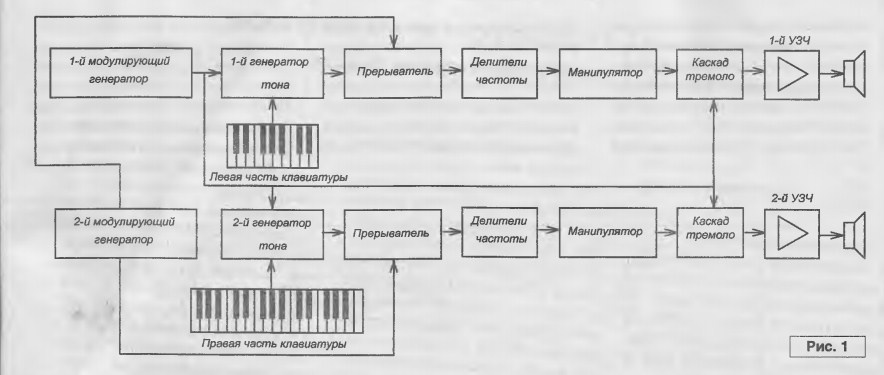
Created according to this scheme (see page 10), it looks like this, without additional design tricks:

But, despite the brutality of the appearance, its capabilities significantly exceed the classic model of 1967 and in many ways close to the professional Styllophone 350S.
Numerous bourgeois amateur radio sites also abound with schemes and guides for the independent creation of stylophones. This sample is highly praised.
When assembled, it looks like this:
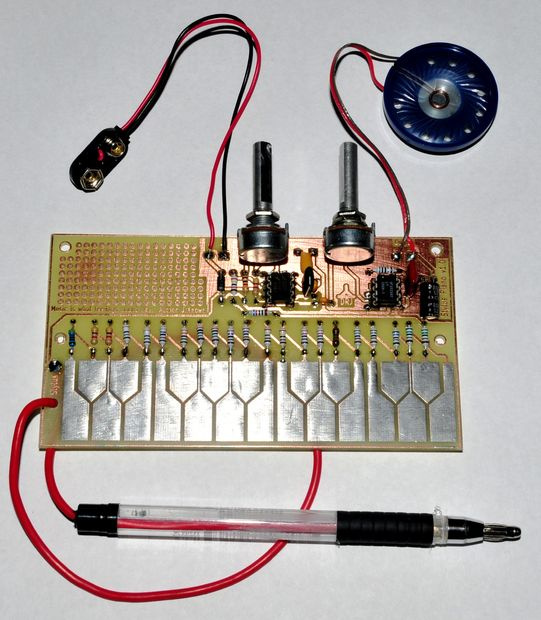
Also, various home-made effects are being invented for classic stylophones, one of the developers demonstrates such a thing in the video below.
Interestingly, the USSR also had its own stylophone. Soviet children used a device called "electronic toy" Electronics ", the principle of operation of which was completely identical to the stylophone. The Soviet stylephone from “Electronics” appeared somewhat later than the Western one (in the late 70s - early 80s) and differed from the foreign counterpart not only in design but also in sound, however, given the lack of normal consumer goods, the mass production of this toy and availability it was a breakthrough for Soviet citizens.
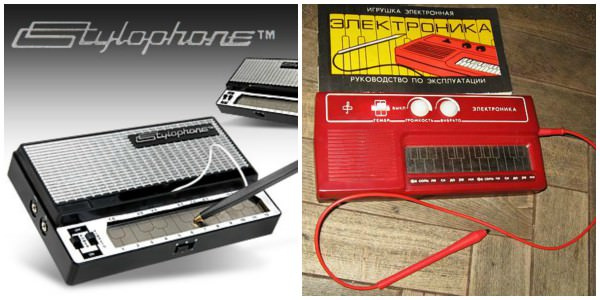
Today there are several vst stylophones named Stylobokh and Stylofoam.
Also known are several mobile applications for Android and iOS.
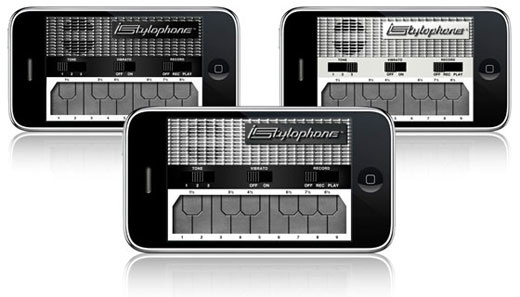
One of the most popular is the Stylo-101 synth toy app, designed for use on tablets.
In fairness, it is worth noting that the sound of digital emulators that I have ever heard is somewhat different from both the classic stylophone and the modern digital Stylophone S2. At the same time, mobile applications are far superior to tools in terms of functionality.
In conclusion, I leave a video with a composition that sparked my interest in this outstanding device from the distant seventies.

Features of the performance indicated that this is not a keyboard synthesizer and not a non-contact "violin" of Theremin. Watching the video showed that the band’s musician used a strange thing, the size of an old portable radio, with a metal panel instead of a keyboard, which is driven by two contact rods. The source of the "magical", lingering, expressive and at the same time quite sharp sounds turned out to be a stylophone (if exactly the Styllophone 350S of the 1970 model). I decided to figure out what this thing is, how it works, where and who used it, and what modern tools of this type are used now.
The story of a stylophone or how money made David Bowie play a children's toy.
The Stylophone was invented at the dawn of the transistor era in 1967, by British enthusiast Brian Jarvis. Legend has it that in 1967, Jarvis repaired his niece's children's electric piano and randomly created this strange and at the same time very interesting instrument. The basic principle of operation of analogue stylophones has been unchanged throughout their history. Sounds are extracted from the instrument by touching the stylus to the “keys” (static metal platinum), the pitch of which changed depending on the resistance of the resistors connected to the oscillator. The first stylophones were produced in 3 versions: with high-frequency, mid-frequency and bass reproduction spectrum.

In the first stylophones, the functions of frequency vibrato and register changes were implemented. The standard keyboard included one and a half octaves (20 notes). In fact, the device was a toy, but almost unprecedented for the 67th year of parameters, and most importantly dimensions.

In 1968, Dubreq took up the production of the tool, which developed a stylish design of the stylophone and invested in a large-scale advertising company. For its time, the stylophone was really a discovery, the device easily fit in your pocket, and at the same time it was able to make sounds accessible at that time for heavy and completely non-mobile analog synthesizers. have worked on reducing the size.

Many well-known performers were connected to the advertising company of the stylophone, including David Bowie, who then quite brightly began his musical career. In accordance with the contract that Bowie signed, he had to record several songs with a stylophone. According to the master himself, it was not easy for him, and he hated this tool.

However, during the period of the advertising campaign he was modestly silent about this and fulfilled the terms of the contract. Using a stylophone, the song Space Oddity of 1969 was recorded, which became one of Bowie's most popular hits in the late 60s and early 70s.
The stylophone itself, both due to its unique properties - pocket size and characteristic sound, and in connection with impressive investments in marketing (by some estimates about 1 million pounds) became a real hit. Typical users of the stylophone are teenagers who are fond of music, children who used it as a toy, and also a relatively small number (compared to the first two categories) of musicians. About 3,000,000 classic stylophones were sold.
In 1970, a new model was developed - the Styllophone 350S, designed for professional musicians. The instrument was seriously expanded and implemented: photovoltaic vibrato and attack control, “wah” (wah-wah effect), an increase in the number of octaves to four (44 notes), provided a wide selection of effects and made the two-voice recorder. All this set of functions was supposed to make the new steelphone popular among professional musicians.
Demonstration of 350S capabilities (1977 is described in the description, although it is known that in 1975 the production of all models was suspended).
Should have, but didn’t. Professionals were conservative and perceived any stylophone as a toy, preferring often more primitive analog synthesizers to it. And for a toy (albeit a very sophisticated one) - 80 pounds (now it is about 700, taking into account inflation) - it was an extremely high cost.

Today on ebay this tool can be found for prices ranging from $ 200 to $ 1,000. However, due to the small number of these devices, the Styllophone 350S may become a serious collectible value in the coming years. As I have already noted, the Russian band Gromyka is very successfully using the Styllophone 350S today, both in studio and in concert. In addition to the already named Bowie, periodically, such artists as Tony Visconti, Richard Baron, Kraftwerk, They Might Be Giants, Pulp played and recorded something on the stylophone.
The renaissance of the steelphone or everything new is well forgotten
In October 2007, due to the rapidly growing interest in vintage music trends, the toy company Re: creation, in collaboration with Dubreq Ltd (which rose from the ashes in 2003 under the leadership of Ben Jarvis, the son of one of the founders of Dubreq), started a restart project stilophone. The companies released a digital copy of the original stylophone, called S1. The design of the device has not undergone significant changes and looks almost the same as its predecessor 32 years before. The sound also remained virtually unchanged.

New technologies and the use of digital synthesis made it possible to further reduce the device, so the most portable of the existing tools of this type Stylophone mini appeared.

Stylophone mini vs. Stylophone S1
In addition, the company released a digital drum machine with loops, made in a design similar to the spirit of the classical instrument. The tool is called the Stylophone Beaetbox. YouTube is replete with rollers using these devices, such as this one:
In 2012, the Dubreq appears Stylophone S2, in which the developers returned to analog roots.

Unlike 60s models, the S2 has a resistive touch panel that responds not only to the stylus, but also to touch with your fingers. It has 3 octaves and is actually a portable analog synthesizer. Gizmo costs about 300 pounds.
In S2, the palette of reproduced sounds has been significantly expanded. This shaitan instrument sounds like this:
In this (2017) year, Dubreq promise to introduce the fresh Stylophone Gen X-1, which will also be an analog synthesizer with a fairly wide functionality. Unfortunately, the detailed characteristics of the miracle are kept in strict confidence. However, the cost of a two-octave instrument, according to developers, should not exceed 60 pounds.
The appearance of the prototype:

DIY stylophones or whoever what
Amateur radio instruments of this type appeared almost immediately after the serial models entered the market, due to which a fairly large number of circuits were accumulated. A big plus of the stylophone for DIY-boxers and hams is the lack of the need to create complex key mechanics. It is enough to etch the board correctly and the thing in the hat - the "keys" will work.

One of the most interesting schemes was published by Radio Amateur magazine in issue 2 of February 2014. Where the two-tone stylophone was presented, working according to the following principle:

Created according to this scheme (see page 10), it looks like this, without additional design tricks:

But, despite the brutality of the appearance, its capabilities significantly exceed the classic model of 1967 and in many ways close to the professional Styllophone 350S.
Numerous bourgeois amateur radio sites also abound with schemes and guides for the independent creation of stylophones. This sample is highly praised.
When assembled, it looks like this:

Also, various home-made effects are being invented for classic stylophones, one of the developers demonstrates such a thing in the video below.
And one more thing
Interestingly, the USSR also had its own stylophone. Soviet children used a device called "electronic toy" Electronics ", the principle of operation of which was completely identical to the stylophone. The Soviet stylephone from “Electronics” appeared somewhat later than the Western one (in the late 70s - early 80s) and differed from the foreign counterpart not only in design but also in sound, however, given the lack of normal consumer goods, the mass production of this toy and availability it was a breakthrough for Soviet citizens.

Today there are several vst stylophones named Stylobokh and Stylofoam.
Also known are several mobile applications for Android and iOS.

One of the most popular is the Stylo-101 synth toy app, designed for use on tablets.
In fairness, it is worth noting that the sound of digital emulators that I have ever heard is somewhat different from both the classic stylophone and the modern digital Stylophone S2. At the same time, mobile applications are far superior to tools in terms of functionality.
Total
In conclusion, I leave a video with a composition that sparked my interest in this outstanding device from the distant seventies.
The article used photo content
